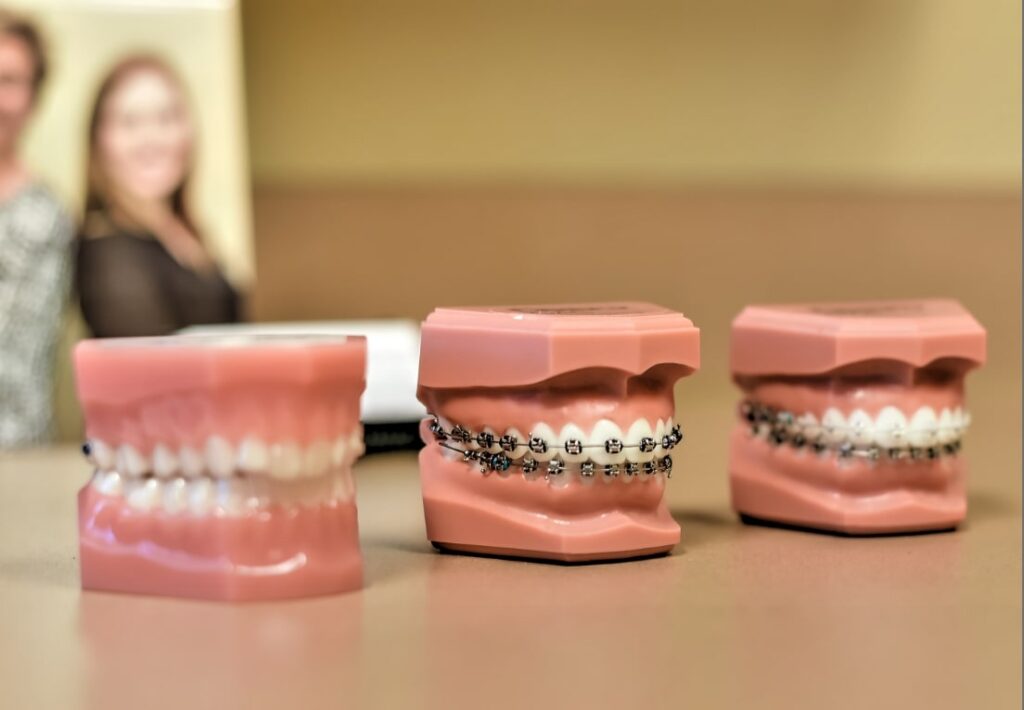Comprehensive Overview to Orthodontics Procedures for Fixing Oral Imbalances
Recognizing the ins and outs of each procedure, including their devices, benefits, and prospective drawbacks, is vital in making educated decisions regarding one's orthodontic therapy. As we navigate via the extensive overview to orthodontic procedures for remedying oral misalignments, the detailed information of each approach will unfold, losing light on the path toward a unified and functional oral alignment.
Orthodontic Procedures Introduction

Regular adjustments and surveillance are vital parts of orthodontic treatment to make certain development is on track and to make any essential adjustments along the way. By undertaking orthodontic treatments, patients can not just achieve a straighter grin however also boost their general dental health and feature.
Standard Braces: Just How They Work
When thinking about orthodontic therapies for oral misalignments, conventional dental braces stand out as a tried and true technique for dealing with teeth placing. Traditional braces contain braces, cords, and bands that interact to apply constant stress on the teeth, progressively relocating them into the desired alignment. The brackets are affixed to the teeth making use of an unique adhesive, and the wires are threaded with the braces. By changing the stress of the cables, orthodontists can control the direction and pressure applied to each tooth, directing them right into appropriate placement in time.
As pressure is used to the teeth via the braces, the bone bordering the teeth is improved to sustain the new tooth placements. Clients will certainly need normal modifications at the orthodontist's workplace to make sure the braces proceed to apply the right pressure for reliable teeth movement.
Unseen Aligners: Disadvantages and pros
Undetectable aligners offer a hassle-free and discreet option to traditional dental braces for correcting dental imbalances. These clear, customized trays are basically unnoticeable when put on, making them an appealing option for individuals looking for a more cosmetically pleasing orthodontic treatment. Among the key benefits of invisible aligners is their removability, permitting simpler maintenance of dental health contrasted to traditional dental braces. People can remove the aligners prior to consuming or brushing their teeth, decreasing the risk of food getting stuck in the home appliance and streamlining the cleaning process.

Surgical Orthodontic Options
Surgical interventions in orthodontics existing feasible choices for dealing with intricate oral imbalances that might not be effectively dealt with with standard orthodontic therapies. While unnoticeable aligners and typical braces can deal with numerous orthodontic concerns, certain situations call for surgical intervention to achieve ideal outcomes. Surgical orthodontic alternatives are usually recommended for severe malocclusions, significant jaw disparities, and instances where the underlying bone structure needs adjustment to achieve appropriate alignment.
One usual medical orthodontic procedure is orthognathic surgery, which involves rearranging the jaws to remedy practical issues such as difficulty chewing or speaking. This surgery is usually executed look at this site in collaboration with an orthodontist who aids straighten the teeth prior to and after the procedure. Surgical orthodontics might likewise entail procedures to subject impacted teeth, eliminate excess gum tissue, or reshape the jawbone to develop an extra harmonious face account.
Prior to thinking about medical orthodontic choices, individuals go through a detailed evaluation to establish the requirement and prospective benefits of such treatments. invisalign. While surgical procedure might appear difficult, it can dramatically improve both the function and appearances of the smile in situations where traditional orthodontic therapies fall short
Retainers and Post-Treatment Treatment

Failure to conform with post-treatment treatment guidelines can result in relapse, where the teeth progressively move back towards their initial placements. Regular retainer wear, great oral hygiene, and routine oral examinations are necessary for maintaining the results attained via orthodontic surgery and guaranteeing the long-term stability of the dealt with oral alignment.
Verdict
To conclude, orthodontic treatments provide various choices for correcting oral imbalances. Conventional braces utilize steel brackets and cords to move teeth into correct alignment. Invisible aligners supply a more very discreet alternative yet may not appropriate for all cases. Surgical orthodontic choices are readily available for much more extreme imbalances. Retainers are generally used post-treatment to keep the brand-new positioning. In Learn More Here general, orthodontic procedures next page can successfully enhance oral wellness and aesthetic look.
As we browse with the comprehensive guide to orthodontic procedures for dealing with dental imbalances, the elaborate details of each approach will unfold, losing light on the path towards a functional and harmonious oral alignment. - orthodontist
One of the most usual orthodontic treatments is the use of braces, which consist of steel braces and cables that use gentle pressure to progressively shift teeth into the desired position.When considering orthodontic therapies for oral misalignments, traditional dental braces stand out as a reliable technique for dealing with teeth positioning. In addition, undetectable aligners may not be ideal for complicated orthodontic concerns that need more substantial teeth motion, as they are normally recommended for moderate to moderate cases. Retainers are personalized orthodontic gadgets created to hold teeth in their remedied positions after the conclusion of orthodontic treatment.